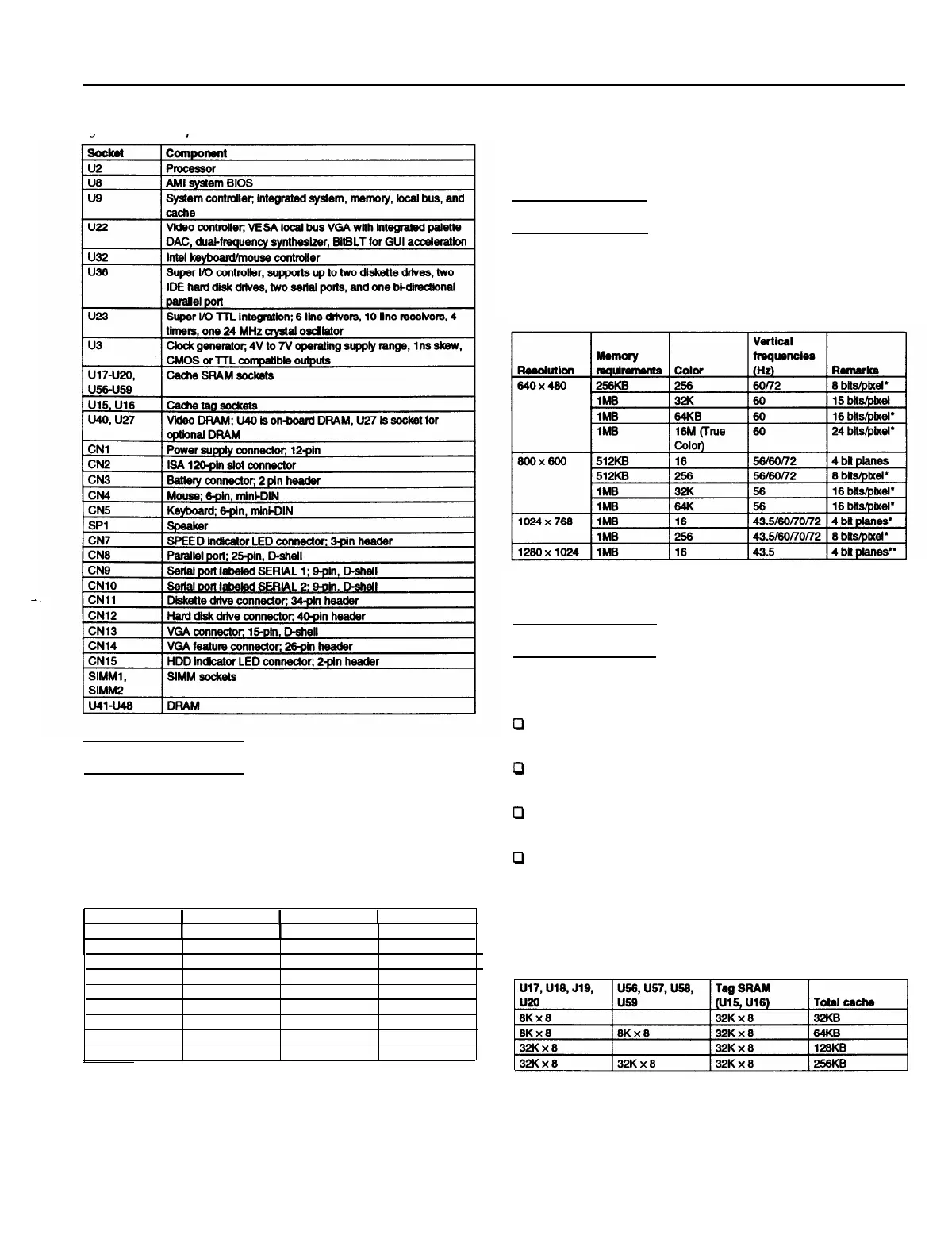EPSON Endeavor L
-
System board components and connectors
SIMM Installation
Your computer comes with 4MB of memory on the system
board. You can increase the memory up to 36MB by installing
1MB, 4MB, and 16MB SIMMs in the computer’s two SIMM
sockets. The following table shows the possible SIMM
configurations. You can install SIMMs in either SIMM socket.
SIMM
configuration
On-board
1
SIMM1
1
SIMM2
1
Total
memory
4MB
1
None
1
None
4MB*
4MB
1MB
4MB
1MB
4MB
4MB
4MB
4MB
4MB
16MB
4MB
16MB
4MB
16MB
4MB
16MB
None
1MB
None
4MB
None
1MB
4MB
16MB
5MB
6MB
8MB
12MB
20MB
21MB
24MB
36MB
l
Standard memory on the system board
Use only 32-bit, 72-pin, fast-page mode SIMMs that operate
at an access speed of 70ns. If 32-bit SIMMs are unavailable,
you can use 36-bit SIMMs instead.
Video Memory
This system comes with 512KB or 1MB of video memory. You
can increase the video memory to 1MB by installing a video
DRAM, 40-pin, 256KB x X-bit, SOJ chip.
Video resolutions and colors
l
Non-interlaced and interlaced
** Interlaced
External Cache
EPSON Authorized Servicers can install 32KB, 64KB, 128KB,
or 256KB of external cache on this system.
0
To install 32KB or 64KB of external cache, use SRAM,
28-pin, 8 x 8, 20ns DIP chips
P
To install 128KB or 256KB of external cache, use SRAM,
28-pin, 32 x 8, 20ns DIP chips
0
For all configurations of external cache, use two 28-pin,
32 x 8, 15ns tag chips
0
If you install external cache, make sure you set jumpers J5,
J6, J7, J8, and J9 as described on page 3.
For the cache memory to work properly, you must install
chips in the following configuration (each bank contains four
cache memory sockets).
Cache memory configurations
3/94
EPSON Endeavor L - 5
